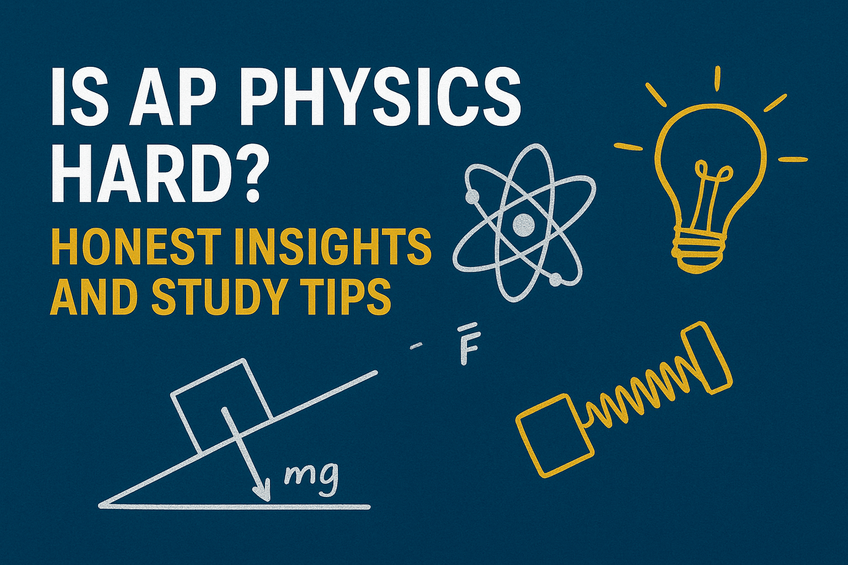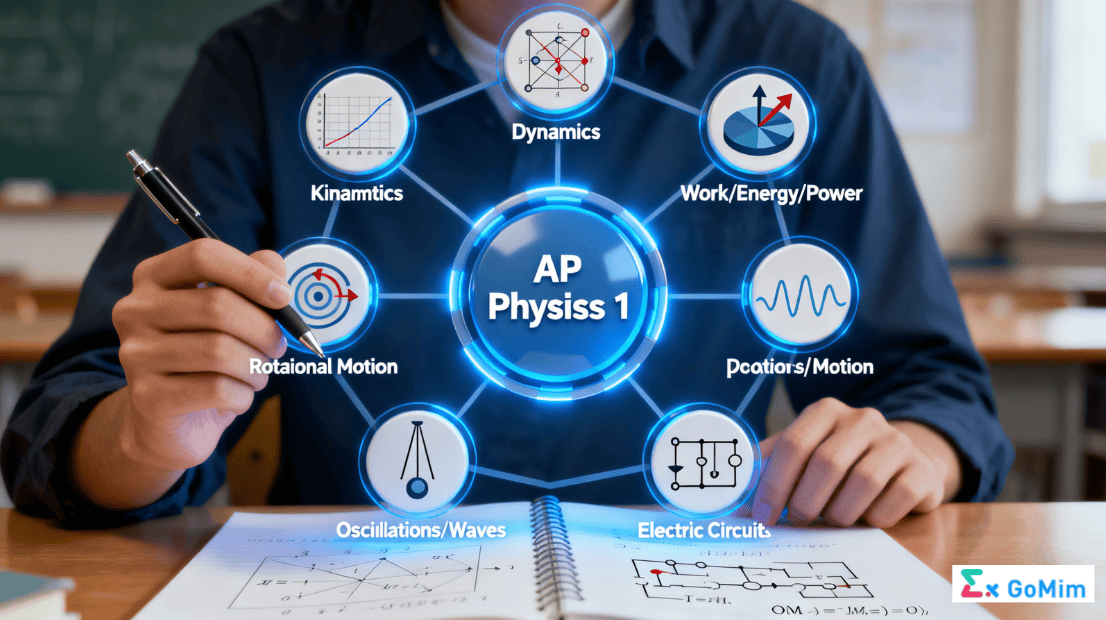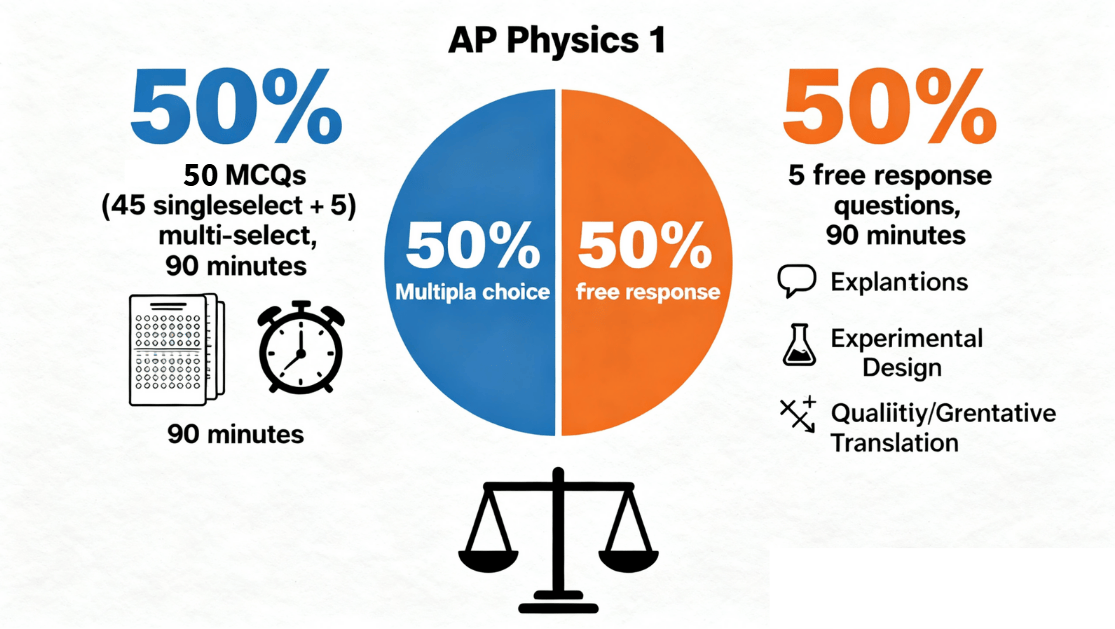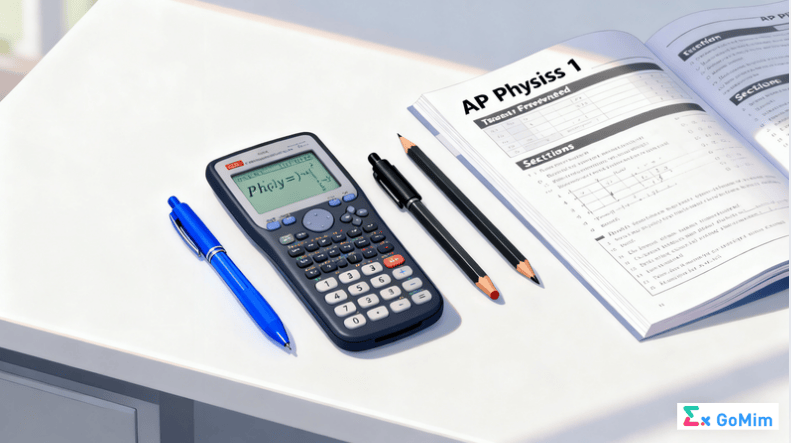Is AP Physics Hard? Honest Insights and Study Tips

For many high school students, AP Physics has a reputation for being one of the most demanding Advanced Placement courses. The subject blends mathematical reasoning with scientific concepts, requiring both strong algebra skills and the ability to think critically about real-world applications. While AP Physics courses vary in focus, from mechanics to electricity and magnetism, AP Physics 1 often stands out as especially challenging. It is typically the first physics AP that students encounter, and it covers a broad range of topics while emphasizing deep conceptual understanding. In this article, we will explore why AP Physics 1 is considered difficult and how to approach it with confidence.
What Makes AP Physics 1 the Hardest AP Class
AP Physics 1 is often labeled the hardest introductory AP science class because it combines breadth with depth. Unlike some courses that concentrate on a narrower set of skills, AP Physics 1 requires students to master mechanics, waves, and simple circuits in a single year. Each unit builds on algebra-based reasoning, and the exam emphasizes application rather than rote memorization. For many students, the challenge lies in shifting from plugging numbers into formulas to explaining why a principle applies in a specific context. Compared with other AP sciences, AP Physics 1 demands a balance of math fluency, conceptual understanding, and persistence, which makes it feel especially rigorous for first-time physics learners.
Key Factors Behind AP Physics 1 Difficulty
The difficulty of AP Physics 1 is not tied to a single reason but rather a combination of several demanding features. Students, teachers, and exam statistics all highlight why this course is considered one of the toughest entry-level AP sciences.
Low Pass Rate & Official Score Distribution
- In 2024, only 47.3% of test takers scored a 3 or higher (passing) on the AP Physics 1 exam.
- Just 10.2% of students earned a top score of 5.
- In previous years, pass rates have hovered around 40–50%, indicating the exam is significantly tougher than many other AP subjects.
Data Source: apcentral.collegeboard.org
Strong Emphasis On Concepts Over Memorization
- Students must do more than recall formulas; they must understand why things work—as shown in free-response parts. Misconceptions (about forces, energy, momentum) cost points even if arithmetic is correct.
- The conceptual nature demands logical thinking, which many find harder than simple plug-and-play problem solving.
Math & Abstract Reasoning Essentials
- Though AP physics 1 is algebra-based, it still requires comfort with algebraic manipulation, trigonometry, vector decomposition, functions, etc. Weakness in any of these can even make MCQs hard.
- The free-response section often involves interpreting experiments or systems abstractly—students new to physics are often less practiced in this kind of reasoning.
Teaching Resources & Practice Material Make a Difference
- Schools with access to good lab work, experienced teachers, and AP Physics 1 past exams or practice tests provide a big advantage.
- Conversely, students without these supports tend to struggle more—for example, they may not have seen strong examples of "Physics 1 multiple choice" style items or high-quality free-response questions before the test.
Should You Choose AP Physics 1?
Whether AP Physics 1 is right for you depends on your strengths and goals. If you enjoy problem-solving, are confident with algebra, and want to challenge yourself with a college-level science, this course can be highly rewarding. It develops reasoning skills that support future studies in math, engineering, and science.
On the other hand, students who struggle with algebra or already have a heavy academic load may find AP Physics 1 overwhelming. Taking a regular physics class first or waiting until your math foundation is stronger can make the experience smoother. In short, choose AP Physics 1 if you are motivated, curious about how the physical world works, and ready for steady effort.
AP Physics 1 Scores Needed for College Credit
One of the top questions students ask is: "What AP Physics 1 score do I need to earn college credit?" Unfortunately, there is no one-size-fits-all answer — policies vary widely among colleges. But we can draw on representative data and trends to help you set realistic expectations.
- Many colleges require a score of 4 or 5 on AP Physics 1 before granting actual course credit (not just placement).
- Some institutions will accept a 3 for credit or placement, especially for elective or general education credits, but fewer do so for courses in STEM majors.
- For example, Texas A&M awards credit for Physics 1 with a score of 3 (for a certain course equivalency) and higher scores may unlock stronger placement.
- The College Board's AP Credit Policy Search tool reflects thousands of colleges, many of which set credit thresholds at 3 or above, but many restrict credit for AP Physics 1 unless the student scores 4 or 5.
A few caveats and tips:
- Even if your school or college allows credit with a 3, that credit might not count toward major requirements in STEM—sometimes it's treated as an elective or for general education.
- Some universities (especially highly selective ones like Brown University and MIT) may refuse AP Physics 1 credit entirely, or only allow placement advantage (skip lower-level courses), rather than awarding credit hours.
- Always check each college's AP credit policy in advance (many list them on their admissions or registrar web pages). The College Board's AP Credit Policy Search is a handy starting point.
In short: aiming for a 4 or 5 gives you the best shot at earning meaningful credit, especially in STEM paths. But a score of 3 may still help in many schools (especially non-STEM or general education). Always verify for your target colleges before you plan your exam strategy.
What Topics Does AP Physics 1 Cover?
AP Physics 1 is designed as an algebra-based, first-year college-level physics course. The College Board outlines a structured curriculum that emphasizes both conceptual reasoning and quantitative problem-solving. Understanding the scope of topics is essential because many students find the range broader than expected.
Core content areas include:
- Kinematics: Motion in one and two dimensions, velocity, acceleration, and graph interpretation.
- Dynamics: Newton's laws, free-body diagrams, and applications of force.
- Work, Energy, and Power: Conservation of energy, potential and kinetic energy, and energy transfer.
- Momentum: Impulse, conservation of momentum, and collisions.
- Rotational Motion: Torque, angular momentum, and rotational kinematics.
- Oscillations and Waves: Simple harmonic motion, wave properties, and sound.
- Electric Circuits: Basic circuit components, Ohm's law, and energy in circuits.

Each unit emphasizes reasoning over memorization. For instance, instead of just applying formulas, students are expected to justify why Newton's second law explains the motion of a block on an incline, or how energy conservation applies to a pendulum. This makes the subject more analytical than many high school science classes.
AP Physics 1 Exam Format
The AP Physics 1 exam is designed not just to test memorization but to measure how well students can apply concepts in multiple ways. Understanding both the exam format and the scoring system helps reduce uncertainty and guides more effective preparation.
- The exam is split evenly: 50% multiple choice and 50% free response.
- Format, according to the College Board AP Physics 1 Course and Exam Description, includes 50 MCQs (45 single-select + 5 multi-select) in 90 minutes, and 5 free-response questions also in 90 minutes.
- Free-response questions ask for explanations, experimental design, and translation between qualitative and quantitative representations.

AP Physics 1 Preparation and Exam Timeline
Success in AP Physics 1 requires more than last-minute cramming. Because the exam demands both conceptual reasoning and problem-solving, students benefit from starting preparation early and following a structured plan.
When to Begin Preparation
The best time to start serious AP Physics 1 preparation is several months before the exam, ideally in the middle of the school year. This allows enough time to revisit challenging units like rotational motion or circuits without rushing. Students with a strong math background may adapt faster, but consistent review is still key.
Effective Study Strategies
- Review with Official Resources: Using the College Board's Course and Exam Description ensures you are practicing within the tested framework.
- Practice with Past Exams: Working through AP Physics 1 past exams reveals how concepts are applied and improves familiarity with free-response expectations.
- Simulate Timed Tests: Taking an AP Physics 1 practise test under exam conditions helps build confidence and time management skills.
- Focus on Multiple Representations: Since free-response often requires diagrams, graphs, and explanations, practicing translating between these formats is essential.
Exam Dates and Score Release
The AP Physics 1 exam is typically offered in early May each year, following the College Board's AP testing calendar. Scores are usually released in early to mid-July through the official AP student portal. Marking these dates early helps students plan their study schedule, set milestones, and avoid last-minute stress.
In short, successful preparation means beginning early, using reliable resources, and practicing regularly under exam-like conditions. This balanced approach turns the exam from intimidating to manageable.
Approved Tools Used in the AP Physics 1 Exam
Having the right tools on exam day ensures that you can focus on solving problems without unnecessary stress. The College Board sets clear guidelines on what students may bring.
- Calculator: According to the College Board calculator policy, a scientific or graphing calculator is permitted for the entire exam. Practice with the same calculator you'll use on test day.
- Writing tools: Blue or black pens are recommended for free-response answers, while pencils are allowed for multiple-choice.

Conclusion
AP Physics 1 stands out as one of the hardest AP courses because of its low pass rates, demanding exam structure, and heavy focus on conceptual reasoning. Success requires consistent practice, familiarity with multiple-choice and free-response styles, and smart use of official resources like past exams and practice tests. To make preparation less overwhelming, tools such as GoMim can give you step-by-step explanations and guided practice, helping you turn complex physics problems into clear, manageable steps.
Recent Posts

Mathematics often brings mixed reactions. Some enjoy the challenge, while others feel overwhelmed by complex equations. ...Try it free now

In today's digital age, selecting the right mathematical tool is essential for students, educators, and professionals al...Try it free now

Artificial intelligence has been rapidly changing how students approach learning, and mathematics is one of the subjects...Try it free now

In today's rapidly advancing digital age, leveraging Math AI tools like GoMim can transform the way students learn and u...Try it free now

IntroductionMathematics can be challenging, but with the rise of artificial intelligence, solving complex problems has b...Try it free now

Have you ever stared at a tricky algebra problem and wished for instant help? Or maybe you tried solving a calculus equa...Try it free now
Table of Contents
- What Makes AP Physics 1 the Hardest AP Class
- Key Factors Behind AP Physics 1 Difficulty
- Should You Choose AP Physics 1?
- AP Physics 1 Scores Needed for College Credit
- What Topics Does AP Physics 1 Cover?
- AP Physics 1 Exam Format
- AP Physics 1 Preparation and Exam Timeline
- Approved Tools Used in the AP Physics 1 Exam
- Conclusion
Your Personal AI Math Tutor
instant problem-solving, step-by-step explanations, personalized learning paths, and visual aids
AI Math SolverLearn math smarter on GoMim
Try GoMim Free - The Most Advanced AI Math Solver!
Join thousands of students using GoMim for math learning and problem -solving.
